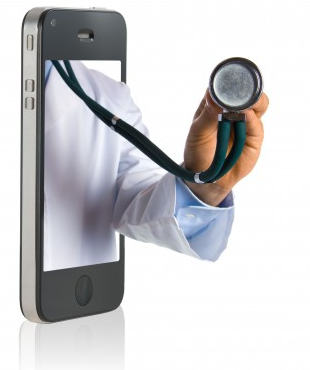New technology is already allowing doctors to see – and even feel – the body through a whole new experience.
The medical imaging industry is now undergoing an entirely new level of potential as virtual reality expands well beyond games and takes its first steps into hospitals as well as medical schools.
This VR technology based experience allows doctors to gain a whole new concept of a patient’s body.
The purpose is to allow doctors to use virtual reality in combination with other more traditional medical tech, such as magnetic resonance imaging (MRI) and ultrasounds, so they can see those images in a three dimensional view, but also interact with those images as though they were really there. By using these viewer devices, in addition to other hardware such as styluses, the doctor will be able to see the image, move it with his or her hand, and even feel resistance through the hardware, as though they were touching the actual organ or other body part that has been scanned.
This virtual reality experience would allow a doctor to look right inside a patient’s brain without cutting into it.
 The majority of today’s medical imaging equipment is already capable of producing high quality 3D images. However, surgeons must view those images in a 2D experience as the only place they can display it is on a traditional screen. Even with multiple images, viewed as a series of snapshots of a body part, they are required to create a mental image of the reconstructed body part in their heads.
The majority of today’s medical imaging equipment is already capable of producing high quality 3D images. However, surgeons must view those images in a 2D experience as the only place they can display it is on a traditional screen. Even with multiple images, viewed as a series of snapshots of a body part, they are required to create a mental image of the reconstructed body part in their heads.
The investment into 3D imaging has been put off, until now, because many doctors don’t feel that viewing a three dimensional image would provide enough benefit to be worth the expense. Hospitals would be required to demonstrate the ability of the tech to improve the care received by the patient, and then be reimbursed for that tech investment.
That said, with the latest virtual reality technologies, that situation could easily change. This tech can draw data and imagery from several sources in order to create a complete 3D view, with the potential to considerably improve the outcomes of patients.
The auto industry is seeing a notable shift in the way consumers are interacting with companies.
According to data from AAA, there has been a considerable shift in the decision people have been making with regards to car ownership and the use of mobile apps has played an important role in this new trend.
There was a time when nearly all teens got their drivers’ licenses as fast as they could, but this has changed.
Today’s teens are used to having mobile apps available that will help them to get the most out of public transportation. They know when the next bus will arrive and can plan around the train delay because they have an application that has alerted them to this information. Moreover, most cab companies, not to mention ride share programs, have apps that allow them to have a ride drive right up to their door. This has led to a massive change in the auto industry because the urgency to buy a car simply isn’t as strong, anymore.
For those who do get their licenses, many are using mobile apps to rent cars when they need them, instead of buying.
 For many people, the excitement of car ownership simply isn’t there, anymore. Cars are expensive, on their own, but the cost of maintaining them has been climbing, insuring them is more expensive than ever, and even parking has become cost-prohibitive in many places. The affordability of fuel isn’t enough to offset the expenses. Moreover, with streets that are continually jammed with cars, the sense of “freedom” isn’t nearly what it used to be.
For many people, the excitement of car ownership simply isn’t there, anymore. Cars are expensive, on their own, but the cost of maintaining them has been climbing, insuring them is more expensive than ever, and even parking has become cost-prohibitive in many places. The affordability of fuel isn’t enough to offset the expenses. Moreover, with streets that are continually jammed with cars, the sense of “freedom” isn’t nearly what it used to be.
AAA data shows that, two decades ago, about two out of every teens had a license by the time they turned 18. Currently, that figure has dropped to just over half of teens at that age. The trend started to change in 2010, through the popularity of smartphones and other mobile devices that could use apps to make it easy to grab a ride or rent one, while on the go, as well as to make public transit easier and more convenient to use. Instead of waiting at a bus stop and wondering when it will arrive, you can arrive at the last moment and know you’re on time.
While auto manufacturers have not been unaware of this trend, mobile apps don’t appear to have been helping them as much as they have been supporting the public transport, ride share and rental industries.
 The majority of today’s medical imaging equipment is already capable of producing high quality 3D images. However, surgeons must view those images in a 2D experience as the only place they can display it is on a traditional screen. Even with multiple images, viewed as a series of snapshots of a body part, they are required to create a mental image of the reconstructed body part in their heads.
The majority of today’s medical imaging equipment is already capable of producing high quality 3D images. However, surgeons must view those images in a 2D experience as the only place they can display it is on a traditional screen. Even with multiple images, viewed as a series of snapshots of a body part, they are required to create a mental image of the reconstructed body part in their heads.
 For many people, the excitement of car ownership simply isn’t there, anymore. Cars are expensive, on their own, but the cost of maintaining them has been climbing, insuring them is more expensive than ever, and even parking has become cost-prohibitive in many places. The affordability of fuel isn’t enough to offset the expenses. Moreover, with streets that are continually jammed with cars, the sense of “freedom” isn’t nearly what it used to be.
For many people, the excitement of car ownership simply isn’t there, anymore. Cars are expensive, on their own, but the cost of maintaining them has been climbing, insuring them is more expensive than ever, and even parking has become cost-prohibitive in many places. The affordability of fuel isn’t enough to offset the expenses. Moreover, with streets that are continually jammed with cars, the sense of “freedom” isn’t nearly what it used to be.